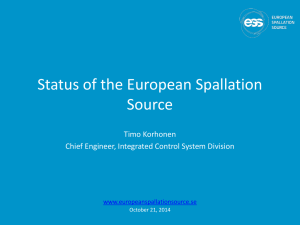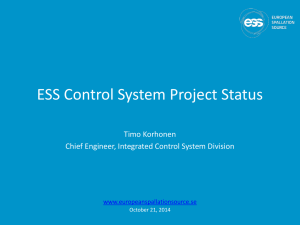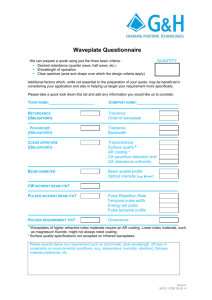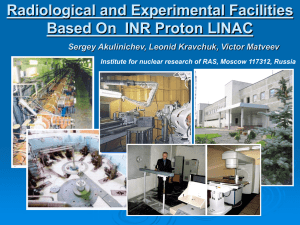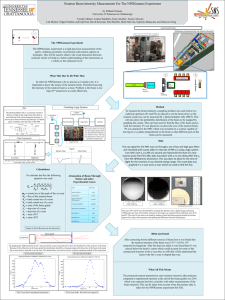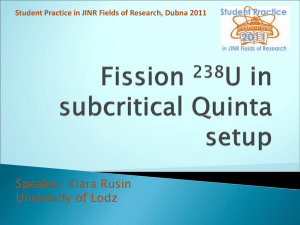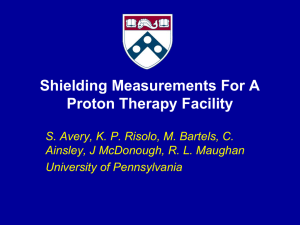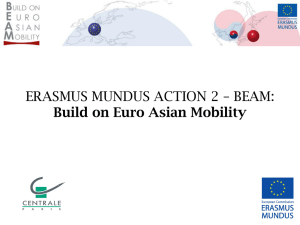ESS Timing System Plans and Requirements
advertisement
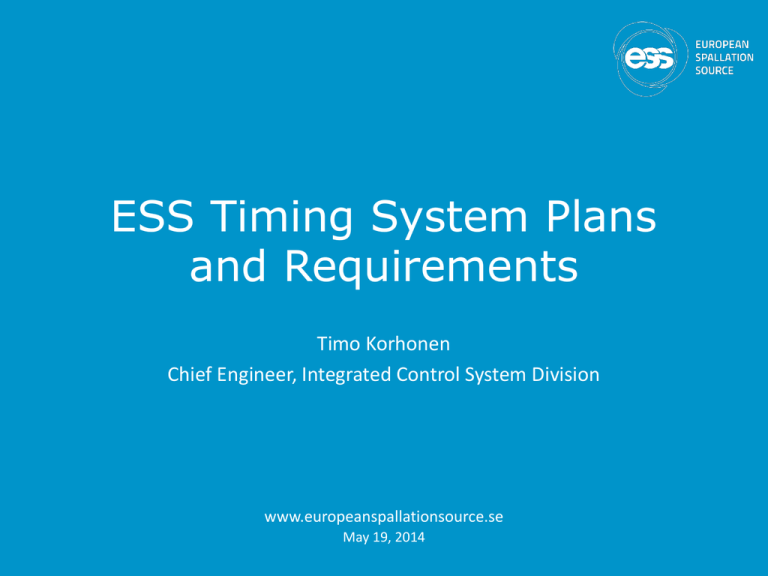
ESS Timing System Plans and Requirements Timo Korhonen Chief Engineer, Integrated Control System Division www.europeanspallationsource.se May 19, 2014 The European Spallation Source • An accelerator-based neutron source to be built in Lund, southern Sweden – Material and life sciences research • A collaboration of 17 European nations Neutron scattering of hydrogen in a metal organic framework – Construction budget about 1860 million Euro • Targeted to be the world’s most powerful neutron source – 5 MW beam power, 2.5 GeV proton energy, 14 Hz repetition rate, 2.86 ms pulse@50 mA beam current – 22 neutron beam lines in construction budget • First neutrons in 2019, full configuration in 2025 X-Ray Image Neutron radiograph Where Will ESS Be Built? • ESS is located in southern Sweden adjacent to MAXIV (A 4th generation light source) • To provide a world-class material research center for Europe What will ESS look like? Target Instruments Linac What is Different About ESS? • The average proton beam power will be 5 MW – Average neutron flux is proportional to average beam power – 5 MW is five times greater than SNS beam power • The total proton energy per pulse will be 360 kJ – Beam brightness (neutrons per pulse) is proportional to total proton energy per pulse – 360 kJ is over 20 times greater than SNS total proton energy per pulse What does 5 MegaWatts mean? • At 5 MegaWatts, – one beam pulse • has the same energy as a 16 lb (7.2kg) shot traveling at – 1100 km/hour – Mach 0.93 • Has the same energy as a 1000 kg car traveling at 96 km/hour • Happens 14 x per second – You boil 1000 kg of ice in 83 seconds • A ton of tea!!! ESS Control System • ESS Integrated Control System Division (ICS) is in charge of building the control system(s) for the accelerator, the neutron target, and providing controls for the beamline components • EPICS as the control system software • Project scope includes also – protection systems (Machine, Personnel) – Global timing system for site-wide synchronization • Some parts of the controls will be provided by ESS partner laboratories as in-kind contributions – e.g., proton source and LEBT controls by Saclay (France) – More to come 7 Timing system requirements • Accelerator parameters for timing – Front end frequency is 352 MHz (CERN Standard) – High energy section is at 704 MHz – Master oscillator at 88 MHz • (even if we could divide from 352 MHz) – Repetition rate 14 Hz • Dictated by neutron choppers • No need to do AC sync (I was told) – Repetition rate must be programmable • No RF pulsing when no beam (power consumption) • But “some” devices need still 14 Hz triggers (?? Needs clarification.) 8 Timing system requirements • Typical requirements for a pulsed accelerator – Triggering of devices – Synchronous acquisition and data handling • Long pulses mean a lot of data per pulse! – Distributing beam parameters • Machine mode: where will the beam go (target, tuning dump) • Beam mode: pulse intensity, length – Repetition rate control • Possibly even single pulses – if possible – Timestamping of data – Some top-level requirements are still under discussion… • ESS challenge: – Interfacing with the machine protection system – Ensuring that machine and beam modes are propagated correctly to all receivers 9 Timing system requirements • The typical requirements are “easy” – 14 Hz vs 100 Hz (or higher) repetition rate – Long pulses create some issues in data handling • For control system in general, not too much for timing • More work in software side – Ramping up the beam power; intensity and pulse length – Beam mode handling – Beam synchronous data handling • Interfacing to MPS is critical – Or, find a way to make MPS totally independent • I cannot yet imagine how that could be done in a reasonable way 10 Issues to be considered • Synchronizing with “slow” devices with no EVR – PLCs, etc. – We need to be able to correlate data – NTP server in EVG IOC? Is it sufficient? • Handling user’s devices – Oscilloscopes, etc. (known issue) • Access to API & hardware interfaces? – Purpose-built devices: detectors, etc. • No standard interfaces • There is still time to think about this, though. 11 Summary • ESS timing requirements are not too different from other pulsed accelerators • Machine protection is a big issue, though – One single mis-steered pulse will break the machine • Platform (form factor) is pending final decision – Lots of push for microTCA, though – How to integrate other devices? • Project timespan is an issue – We are building now something that will be in full use after 10 years, and have an expected lifetime of 40 years – Roadmap for upgrades and technology refresh • Collaboration is very much appreciated! – Sharing of knowledge, applications, ideas… 12
